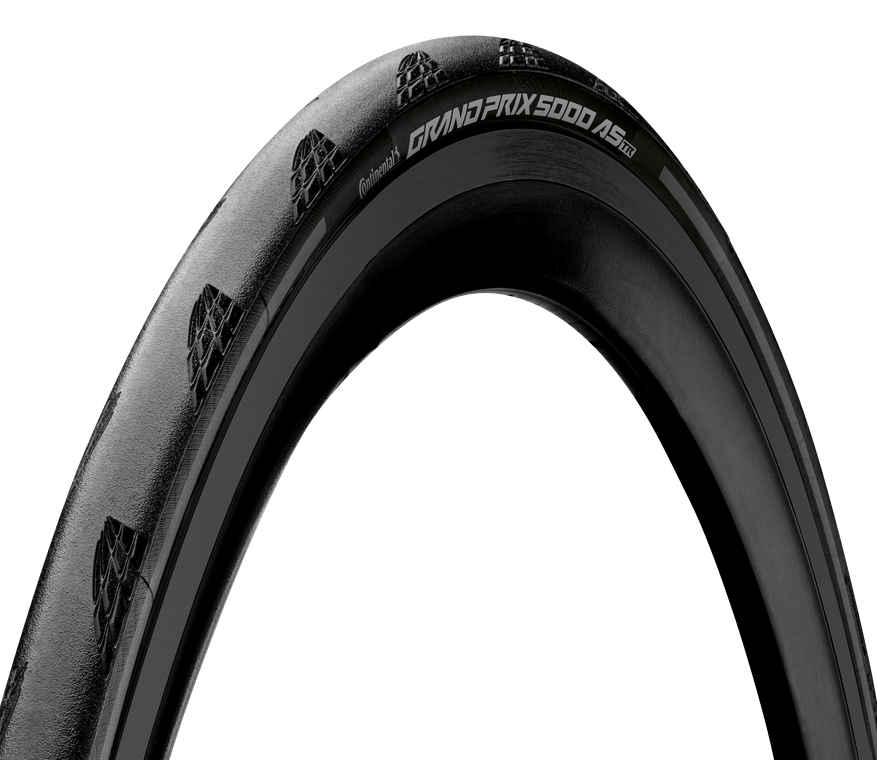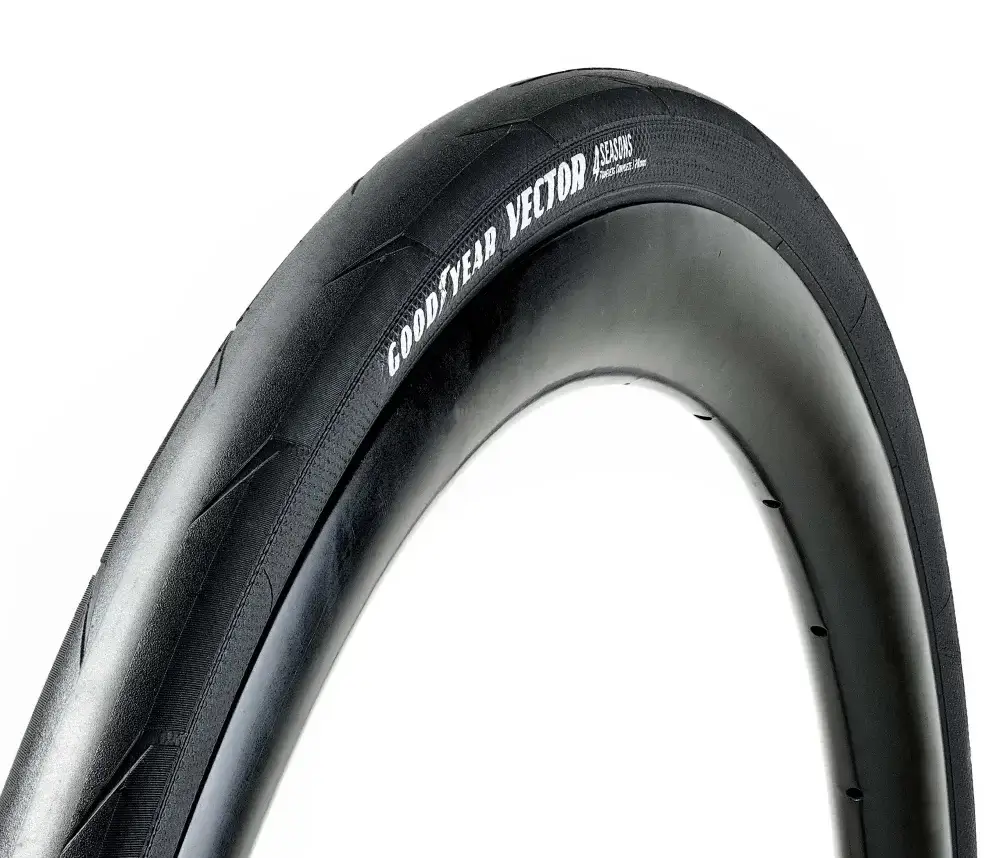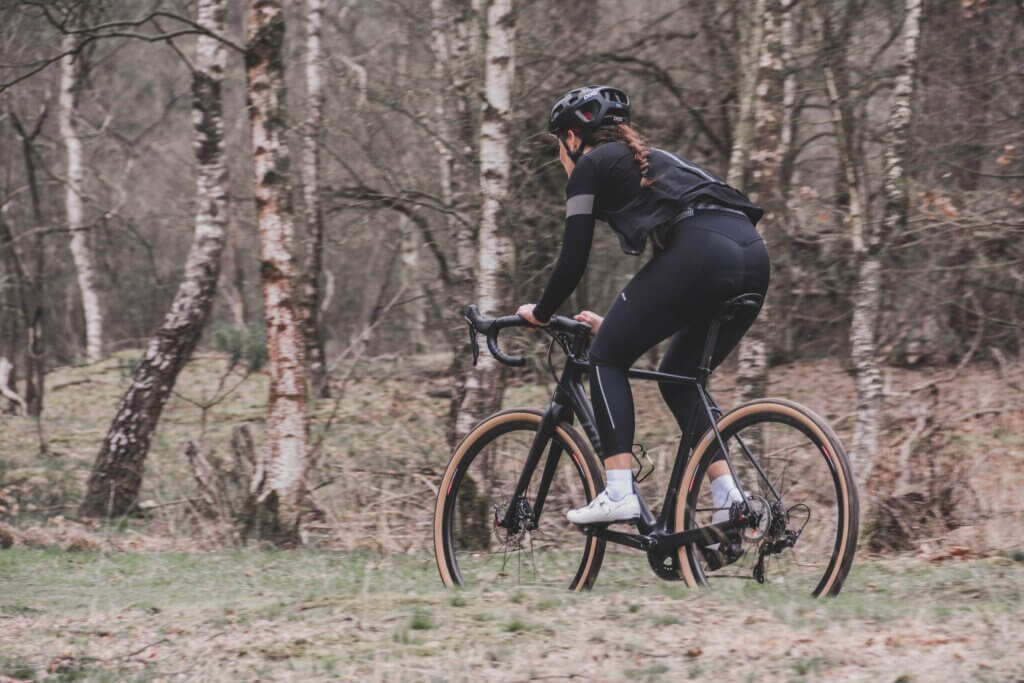This website uses affiliate links which may earn a commission at no additional cost to you.
As an Amazon Associate we earn from qualifying purchases.
Table of Contents
Winter cycling comes with its set of challenges, including dealing with bad weather conditions and rough road surfaces. If you’re an experienced cyclist, you’re likely familiar with the frustration of fixing a puncture on a cold, rainy winter’s day, when your hands are stiff with cold.
Fixing a flat tire in these conditions can feel like a daunting task. That’s why investing in high-quality winter tires designed to tackle these challenges head-on is not just a good idea—it’s essential.
Winter tires are specially designed to provide better traction, control, and safety on slippery, wet, or icy surfaces. They feature unique tread patterns and rubber compounds that maintain flexibility in low temperatures, improving grip.
By investing in winter tires, you’re not only safeguarding your safety but also enhancing your overall cycling experience.
In this guide, we’ll explore the top 5 winter tires for road bikes that are meticulously designed for the colder months, as well as one tire that might not meet your winter cycling needs.
1. Continental Grand Prix 5000 AS TR

The Continental Grand Prix 5000 AS TR, an enhanced version of the GP5000 S TR, is a standout choice for winter cycling enthusiasts. This tire is Continental’s premium offering, designed to tackle the challenges of winter roads.
As an upgrade to the classic 4 Season tire, the Continental Grand Prix 5000 AS TR features a reinforced casing and a thicker tread, making it a formidable choice for cold-weather riding.
One notable feature is its tubeless-ready design, providing excellent robustness and remarkable grip while maintaining impressive rolling resistance. The AS TR tire is engineered for tubeless use, although it’s versatile enough to be used with a tube if desired.
It’s compatible with both hooked and hookless rims, providing flexibility for various bike setups. Available in 25c, 32c, and 35c widths, it caters to a wide range of preferences.
In dry conditions, the AS TR tire offers a level of suppleness and confidence similar to the S TR version. However, where it truly shines is in wet conditions, thanks to the improved Black Chilli compound that delivers exceptional grip.
The thicker tread, coupled with reinforced sidewalls, enhances the tire’s longevity and durability, providing peace of mind during challenging winter rides.
The Continental Grand Prix 5000 AS TR strikes a balance between performance and resilience, offering nearly the same performance as the S TR version but with added durability. The AS TR is a compelling choice for year-round riding.
The only downside of this tire is that it’s one of the most expensive options on the market, reflecting its premium performance and durability. While it’s undoubtedly an investment, the Continental Grand Prix 5000 AS TR delivers outstanding performance and reliability, making it well worth the cost for cyclists who demand the best.
2. Schwalbe Marathon Winter Plus

Introducing the Schwalbe Marathon Winter Plus – your trusty companion for tough winter road cycling. These tires aren’t just reliable; they’re highly durable, and you won’t feel like you’re riding slowly.
The secret behind their strength is the SmartGuard system, a nifty feature that kicks out sharp objects, so they can’t puncture your tire. Even thumbtacks can’t get through this sturdy shield.
Sure, these tires might not be as speedy as the lighter, less puncture-resistant ones, but they offer something priceless – peace of mind. No more struggling to change a flat on a cold, wet February morning. The Schwalbe Marathon Winter Plus tires will save you from that hassle.
Installing them might take a little effort, but these tires make up for it. They’re nearly bulletproof against punctures, and they roll surprisingly well for their size. Plus, they’re budget-friendly.
That’s why we still think they’re the best choice for dependable winter road tires. These rugged, all-season tires are great for touring, commuting, and winter training – they’ve got you covered.
3. Specialized Roubaix Pro

Check Price on Specialized.com
Specialized’s Roubaix Pro tires have gained popularity among winter cyclists, and the reasons are clear. These tires are a reliable choice for those seeking dependable performance during winter cycling, training sessions, or daily commutes. These tires work well in various conditions, offering a responsive ride and trusty handling even in wet and slippery conditions.
What makes them special is their tough 120 threads per inch casing and their clever tread pattern. This means you get tires that respond quickly and help you stay in control on challenging roads. Specialized has also made sure they last with their Endurant casing and BlackBelt technology.
These tires grip the road nicely, so you can ride with confidence in wet or loose conditions. They also let you speed up and keep a steady pace.
You can pick from three different widths: 23/25mm, 25/28mm, and 30/32mm, depending on your wheel and rim size. The Roubaix Pro tires are a good value for the quality they offer, making your rides more enjoyable and stress-free.
4. Goodyear Vector 4Seasons

The Goodyear Vector 4Seasons tire is designed to offer a reliable and versatile option for year-round cycling. With a focus on maintaining excellent ride quality while providing the grip and durability needed for winter cycling, it’s a dependable choice for cyclists facing a variety of weather conditions.
Goodyear has equipped the Vector 4Seasons with advanced features like R:Shield and R:Armor protection. These innovations offer comprehensive sidewall protection, guarding against punctures from all angles and minimizing the risk of pinch flats. With this added protection, you can ride with confidence even in the face of potential obstacles on the road.
This tire comes in two options: a Tubeless Complete version and a non-tubeless clincher option known as the ‘Tube Type.’ This variety allows you to choose the one that best suits your setup and preferences.
Available in sizes ranging from 700 x 25 to 32c, the Goodyear Vector 4Seasons ensures compatibility with a wide range of road bikes.
On the road, the Vector 4Seasons lives up to its reputation as a dependable companion for winter cycling. With its impressive grip, it inspires confidence, particularly in challenging conditions. While it may not deliver the same fast and supple feel as thinner summer tires, it excels in being a durable and hard-wearing option.
If your priority is a tire that can handle tough conditions and offer long-lasting performance, the Goodyear Vector 4Seasons is a solid choice. It’s designed to keep you rolling through all seasons with reliability and peace of mind.
5. Hutchinson Fusion 5 All Season 11Storm

The Hutchinson Fusion 5 All Season 11Storms tire is designed for handling unpredictable and mixed weather conditions, making it a strong contender for winter cycling. These tires are engineered for optimal performance, boasting remarkable grip on wet roads while displaying the resilience needed for the harshest terrains.
These 11Storms tires are built with an innovative ElevenStorm rubber compound, specifically grooved for enhanced wet terrain traction. With added compound thickness for increased durability and Kevlar reinforcement to ward off punctures, they’re a robust choice for winter cycling.
Available in both 25mm and 28mm widths and tubeless-ready, you can choose the perfect fit for your bike. There’s even a 23mm option for road tubeless and tube-type clinchers, ensuring versatility.
Whether you’re cycling during winter or spring when roads are less than ideal, these tubeless tires excel. They offer a winning combination of speed and grip, along with excellent durability and puncture resistance.
Plus, they provide great value, making them a top pick for riders looking to conquer challenging conditions with confidence. With the Fusion 5 All Season 11Storms, you’re well-equipped to face whatever Mother Nature throws your way, ensuring a smooth and safe winter cycling experience.
One to Avoid: Continental Gatorskin Tire

The Continental Gatorskin Tire, although a common choice for many low-price and mid-range road bikes, may not be the wisest option for winter road cycling. In fact, some cyclists humorously refer to them as “Skaterskins” due to their slippery nature when encountering wet surfaces.
Gatorskins are renowned for their durability, making them suitable for areas that experience dry weather for the most part. While these tires excel in terms of longevity and puncture protection, they have certain characteristics that can be problematic in winter conditions.
Their rubber compound is of a harder, less grippy variety, which is less than ideal for navigating wet or slippery roads and tackling tight corners. The absence of a specialized winter tread and compound means these tires struggle to provide the level of traction required for optimal performance in cold, wet, and slippery conditions.
If you reside in an area prone to punctures and rarely ride in wet conditions, Gatorskins might be an option to consider. But even then, you should exercise caution when using them in wet weather. Their limitations become evident when it comes to cornering, and their reputation for being “slippery when wet” holds true.
Therefore, it’s advisable to avoid Gatorskins for winter cycling and invest a bit more money in one of the tires mentioned in the list above. By doing so, you can enjoy the peace of mind that comes with tires specifically designed to tackle the challenges of winter.
How to Choose the Right Winter Tire for Your Road Bike

Now that we’ve explored the top winter tires and identified one to avoid, let’s delve deeper into the process of selecting the perfect tire to cater to your specific needs during the colder months. Choosing the right winter tire hinges on a few critical factors, including size, tread pattern, budget, and thickness. To ensure an ideal tire that enhances your winter cycling experience, consider the following guidelines:
Tread Patterns
Pay close attention to the tread pattern of the tire you’re eyeing. Deeper and more aggressive treads are particularly beneficial for winter conditions, providing superior traction on slippery surfaces. When choosing a tread pattern, make sure it aligns with the specific winter conditions you’re likely to encounter during your rides.
Rubber Compound
Take into consideration the rubber compound utilized in the tire. Winter tires often employ softer rubber compounds designed to maintain flexibility in colder temperatures. This soft compound ensures a better grip and more responsive handling on cold, slippery surfaces. It’s a critical feature for enhanced safety and control.
Puncture Protection
Look for tires that come equipped with puncture protection features. Winter roads can conceal sharp debris beneath the snow, posing a threat to your tires. The added layer of defense in puncture-resistant tires significantly reduces the risk of inconvenient flats, ensuring your winter rides remain hassle-free.
Tire Thickness
When it comes to winter tires, the tire thickness is another crucial factor to consider. Opting for a slightly wider tire, such as 25mm or 28mm, can provide additional stability and better handling on wet and slippery roads. The increased surface area in contact with the road enhances traction, making for a safer and more enjoyable winter cycling experience.
Tire Pressure
Given that winter roads are often wet, it’s important to adjust your tire pressure accordingly. As a general rule, the wetter the road, the lower the tire pressure you should aim for. While it might be acceptable to ride with tires inflated to 120psi during the dry summer months, it’s a wise move to lower the pressure when road conditions are wet. Lower tire pressure provides more grip and better control, reducing the risk of slipping on wet surfaces, a common occurrence in winter.

